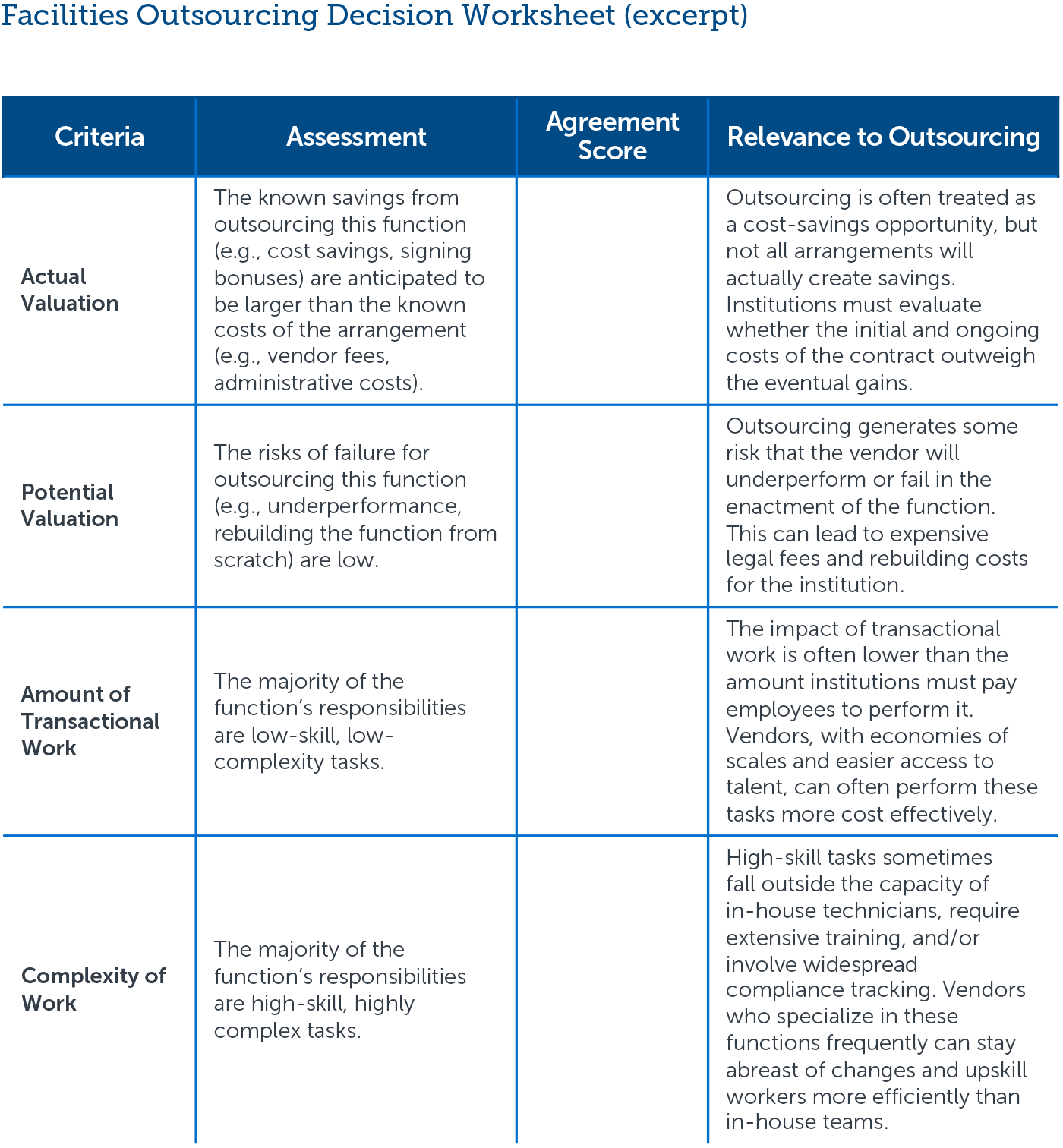
Six considerations before outsourcing a function
Many institutions consider the potential cost savings of outsourcing a function, but this often represents only a partial analysis. A Value for Money analysis will identify actual valuations and potential valuations.
Functions with either low-complexity (e.g., custodial services) or high-complexity (e.g., HVAC maintenance) tasks are good candidates for outsourcing because employing both require extensive personnel funding.
Institutions must evaluate the service level they require from the function, as well as how outsourcing might impact its performance.
Institutions should evaluate how frequently they anticipate functional demand (e.g., seasonal leaf blowing or snow plowing) when deciding whether to outsource it.
While all functions require HR support, certain roles, such as those with high turnover rates, demand more from human resources and are often good outsourcing candidates.
All Facilities functions contribute directly or indirectly to institutional strategic objectives. Before outsource a function, institutions should first identify the strategic goals the function impacts.
Additional Tool
Leaders seeking step-by-step guidance to evaluate the viability of an outsourcing arrangement can use EAB’s Facilities Outsourcing Decision Worksheet. The worksheet quantifies ten separately weighted criteria to provide an outsourcing possibility score.
Avoid the following five mistakes
Arrangements are most effective when the institution retains its ability to set goals, specify service-level targets, and prioritize particular campus spaces and evaluation metrics.
Contracts often collapse when institutions assume vendors will procure their own supplies or when service providers have different understandings of service level requirements.
Institutions should spell out their desired results—even going as far as to include photos of service-level achievement in the contract—and let vendors determine how best to accomplish those results.
Leaders should vest the vendor in the success of the institution overall, and ensure contracted staff are integrated into the campus community. Shared goals include reduction in deferred maintenance and joint cost savings from improved efficiency.
While long-term contracts frequently offer upfront financial benefits, these contracts can lock institutions into problematic or unsatisfactory arrangements without recourse to renegotiate. Limit contracts to five years with options.
Share more resources with your team

This resource requires EAB partnership access to view.
Access the roadmap
Learn how you can get access to this resource as well as hands-on support from our experts through Strategic Advisory Services.
Learn More














